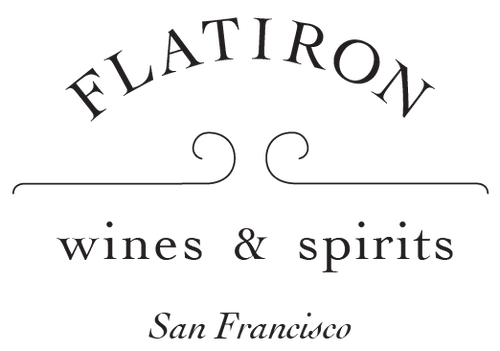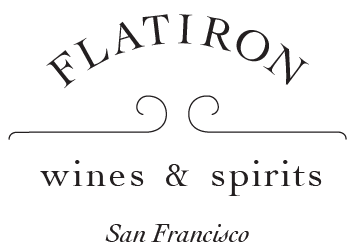Larry Stone is among America's most accomplished wine people. A virtuoso in every sense of the word, he became a Master Sommelier when there were but a handful in the US, then quickly won the World Best Sommelier competition in Paris. He went on to develop the groundbreaking lists at legendary San Francisco restaurant Rubicon, and Daniel Boulud’s temple to gastronomy, Daniel. In 1979, he judged at the coming-out event for the pioneers of Oregon wine, a tasting of the Enological Society of the Pacific Northwest. In 1980, he assisted the great André Tchelistcheff and Allen Shoup in determining blends at Chateau Ste. Michelle. He dined with Julia Child and Angelo Pellegrini, hobnobbed with Darrell Corti (if you have not made a pilgrimage to Corti Brothers in Sacramento, you need to fix that), flew on the Concorde (I am green with envy) delivering lectures on Bordeaux. Oh, and he kicked Madonna out of the dining room at Seattle’s Four Seasons Olympic back in her Material Girl era for harassing an older couple. This is in no way an exhaustive list.A life filled with so many accolades would give most folks big heads and rightfully so. But not Larry. From our personal experience as well as reports from some of his proteges, he is kind and generous. Hard working, powerful intellect and refined in taste, of course. But even more remarkable for his willingness to help talented hard-working folks get a leg up, no matter the person's color, creed, or gender.Larry was one of the first to make the move to the Willamette Valley where he partnered with Dominique Lafon and developed Evening Lands. Now run by (arguably his most famous protege) Rajat Parr, Evening Lands has effortlessly married the unique and extraordinary raw material of the Willamette Valley with the generational knowledge and exacting winemaking of Burgundy. Early on at Evening Lands, Larry had his eye on the property directly across the road. Before wine was a thing there, Eola-Amity Hills was mostly populated by religious groups escaping what they viewed as a corrupt society. In fact, the property that Larry would eventually buy and turn into Lingua Franca was owned by the relatives of one of the original religious leaders in the area. Many viewed wine and alcohol in general as sinful and weren't too keen on watching their property turn into a vineyard. After years of back and forth Larry eventually won them over.That was 2012 and the original idea was to sell the grapes. The idea of starting a winery from scratch was a bit daunting. With nothing left to prove, why take on the effort, financially and physically stress, of building a winery from scratch. But Dominique Lafon was sure the property was capable of producing world-class wines and he insisted that Larry make his own wine from the property. And really, who says no to Lafon?Vines were planted and eventually a winery was built. Not expecting anything special from the young vines in their first decade, Dominique and Larry were both surprised when their first vintage turned out to be exceptional. Early on, winemaking responsibilities were handed over to Lafon’s protege, Thomas Savre, with Lafon consulting. The wines have continued to evolve and are now perhaps the best at balancing Oregon's rich fruit and volcanic minerality with the elegant structure and savoury qualities one associates with Burgundy. Lingua Franca’s home vineyard, the 66-acre LS Vineyard, is situated on Lone Star Road next door to two iconic vineyards in the Eola-Amity Hills: Seven Springs and Lone Star, two of Oregon's “Grand Crus.” While it shouldn't be surprising that they're all right next to each other, it's still, somehow, surprising. Seeing the sites side by side... it's like when you go to Burgundy for the first time and realize that Richebourg abuts Romanée Conti and La Romanée. The site is rich in Jory, Jory-Geldermann, and Nekia soil, and the vineyard is a combination of 18 different Dijon clones and heritage clones and rootstock, sourced from specific vineyards when possible. The parameters here are perfect: eastern exposure, morning sun, moderate cooling winds, slopes of 12-20% throughout the vineyard, and excellent drainage. Most of the property was planted with Pinot Noir because no one thought much about Oregon Chardonnay in 2012. That has since changed dramatically, in no small part because of Evening Lands. Today, Oregon Chardonnay competes shoulder to shoulder with Burgundy and California. The Chardonnay is planted in the shallow soil and much of it is dry-farmed with the roots working their way into cracks in the lava beds below. The high mineral content and low vigor creates savory yet delicate Pinot Noirs that are both complex and worthy of many years in the cellar but are magical upon release. Today Lingua Franca stands amongst the handful of Oregon wine giants, Eyrie Vineyards and her progeny, who are among the world's great wineries.
Professional Reviews
Wine Enthusiast
Details
-
Grape Variety
-
Vintage
2019
-
Size
750ml
-
Farming Practice
Biodynamic
-
Style
Elegant , Fruity , Minerally
-
Sweetness
Dry
-
Body
Medium Bodied


